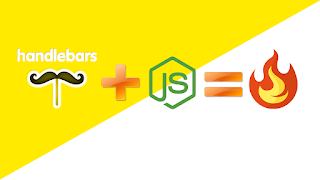const express = require("express");
const mailer = require("nodemailer");
const Email = require("email-templates");
const path = require("path");
const app = express();
// Parse JSON bodies (as sent by API clients)
app.use(express.json());
// Parse URL-encoded bodies (as sent by HTML forms)
app.use(express.urlencoded({ extended: true }));
// Parse "multipart/form-data" using multer
//using path to join email template path
const templateDir = path.join(__dirname, "public", "email-template", "email");
//using mailgun transporter to send email via nodemailer
const transport = mailer.createTransport({
host: "smtp.mailgun.org",
port: 587,
auth: {
user: "postmaster@sandbox85d0bb013570440e8cdc63cfe4475231.mailgun.org",
pass: "d6f92a983e92becc750b16cd1576791c-523596d9-9209e030",
},
});
app.post("/insert", async function (req, res) {
try {
const email = new Email({
message: {
from: req.body.mail_from,
},
transport: {
jsonTransport: true,
},
views: {
root: templateDir,
options: {
extension: "hbs",
},
},
});
let locals = {
name: "pradipta",
attachment_file_name: "New Text Document.txt",
attachment_file_url: attachment_file_url,
};
let getResponse = await email.render(templateDir, locals);
var mailOptions = {
from: req.body.mail_from,
to: req.body.mail_to,
subject: "Sending Email using Node.js",
html: getResponse,
};
let mailSend = await new Promise((myResolve, myReject) => {
transport.sendMail(mailOptions, (error, info) => {
if (error) {
myReject(error);
} else {
myResolve("Email sent: " + info.response);
}
});
})
.then((value) => {
return value;
})
.catch((err) => {
return err;
});
res.status(200).send({ status: 200, mailSend: mailSend });
} catch (e) {
throw e;
}
});
app.get("/", function (req, res) {
res.send(`
<div style="margin:100px">
<form action="/insert" method="post">
<div class="form-group">
<input type="text" class="form-control-file" name="mail_from" placeholder="Enter Mail From">
<input type="text" class="form-control-file" name="mail_to" placeholder="Enter Mail To">
<input type="submit" value="Get me the stats!" class="btn btn-default">
</div>
</form>
</div>
`);
});
app.listen(3000, () => {
console.log(`App running at http://localhost:3000`);
});
- We are using nodemailer npm to send emails from Node.js.
- We are using path npm to access and interact with the file system.
- We are using email-templates npm to Create, preview, and send custom email templates for Node.js.
- We are using handlebars npm view engine, which allow us to render web pages using template files. These templates are filled with actual data and served to the client.
- We are using mailgun for transport mechanism.
email.hbs
<!DOCTYPE html>
<html>
<style>
input[type=text], select {
width: 100%;
padding: 12px 20px;
margin: 8px 0;
display: inline-block;
border: 1px solid #ccc;
border-radius: 4px;
box-sizing: border-box;
}
input[type=submit] {
width: 100%;
background-color: #4CAF50;
color: white;
padding: 14px 20px;
margin: 8px 0;
border: none;
border-radius: 4px;
cursor: pointer;
}
input[type=submit]:hover {
background-color: #45a049;
}
div {
border-radius: 5px;
background-color: #f2f2f2;
padding: 20px;
}
</style>
<body style="width: 50%; margin-inline: auto; padding-top: 2%;" align="center">
<h3><a href="https://javascript-solving.blogspot.com/">Mail From javascript-solving </a></h3>
<div>
<form action="#">
<label for="fname">Mail From</label>
<input type="text" id="fname" name="firstname" value="{{mail_from}}" readonly>
<label for="lname">Mail To</label>
<input type="text" id="lname" name="lastname" value="{{mail_to}}" readonly>
</form>
</div>
</body>
</html>


Very help full
ReplyDelete